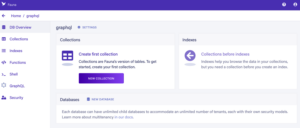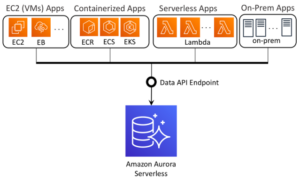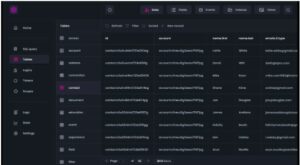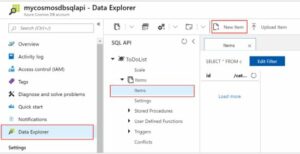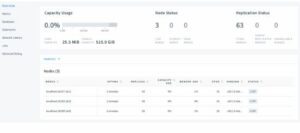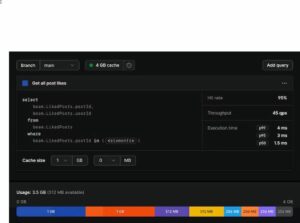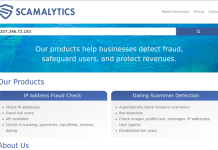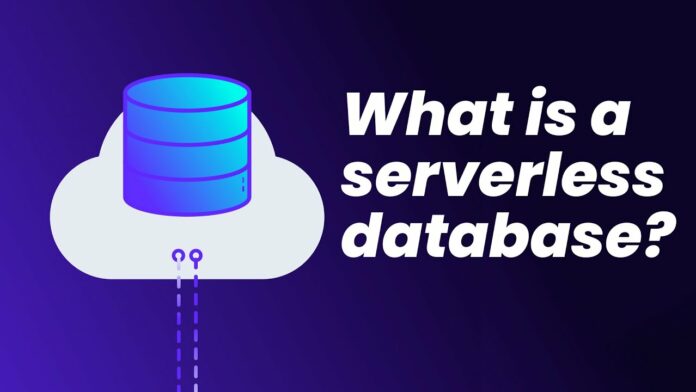
Best Serverless Databases For Modern Applications will be described in this article. It’s time to select the serverless database solution that best suits your contemporary application. The purpose of serverless databases was to manage workloads that are erratic and subject to sudden changes. Because of this, a lot of businesses have used serverless architecture to create cutting-edge event-driven systems. Within the serverless technology ecosystem, this has grown in favor.
Top 9 Best Serverless Databases For Modern Applications
In this article, you can know about Serverless Databases For Modern Applications here are the details below;
Introduction to Serverless Databases
A serverless database is necessary for serverless computing. These databases are made especially to manage workloads that are erratic and subject to sudden changes. More over?
Only the database resources you utilize each second are charged. Furthermore, fully managed and scaleable up to 64TB cloud databases are available, such as Amazon Aurora, which is compatible with MySQL and PostgreSQL.
You can construct this database by selecting the instance size. This is effective in situations where the workload, request volume, and processing specifications are known in advance.
When there are a lot of requests for a short period of time every day or week and the workload is unexpected, it might be challenging to set up the appropriate amount of capacity. Ongoing payment, though, might not be the best course of action.
The serverless database is useful in this situation.
Serverless Databases Features
The key characteristics of serverless databases are as follows:
- Real-time Access: You have fine-grained access to your data. The data are automatically indexed and made available right away. This gives you continuous access to query, read, update, and add entries to your serverless database. More over? Through functions, you’ll be able to access it right away.
- Unlimited Scalability: Serverless databases can be scaled up or down at any time. They launch and terminate in accordance with the requirements of the application. In the case of Aurora Serverless, it will scale the computing units (ACUs) to accommodate your queries, reading from and writing to the same data cluster. You’ll be able to execute all of your tasks at once thanks to automation, which will also guarantee data consistency.
- High Security: On a worldwide scale, malevolent and untrusted audiences may be exposed to modern applications. It makes sure that the same access control protocol is passed by each application that communicates with the same database. It lowers the attack surface, a critical risk that affects enterprises.
- Availability: You can lower latency by using the serverless database. The user can directly read data from event-driven routines thanks to this method.
- Schemaless: Schemaless gives you the ability to manage all function data outputs. With this “handle everything” strategy, integrating the serverless database with your functions is simple. One special quality of serverless databases is this.
Let’s now investigate some of the top serverless databases for contemporary apps.
1. Fauna
A distributed, serverless database is called Fauna. Fauna is incredibly adaptable. To fit the requirements of your project, you can change a number of parameters. You can use Fauna as a typical relational database, document-based, graph, or key-value database. Either develop a schema or allow the data to flow freely.
It is quite adaptable. Fauna can operate on-site, in the cloud, or integrated into our software. Additionally, it provides the most often used deployment alternatives, such as docker or machine images. This program works well with ACID transactions and has very good running speeds.
2. Amazon Aurora
From the Amazon cloud, users can use the relational data storage service Amazon Aurora. Data storage is one of the main uses for this service. Low latency, value-based data storage is made possible by it.
Relational database Amazon Aurora, compatible with PostgreSQL and MySQL, combines the ease of use and speed of conventional databases with the dependability and ease of use of commercial databases at a fraction of the price. For effective data availability, it replicates data using a clustered method in AWS’ accessible zone.
Numerous high-performance subsystems are part of Amazon Aurora. The MySQL and PostgreSQL engines use the quickest distributed storage. Compared to the present system, Aurora improves MySQL performance and throughput by a factor of three and five, respectively.
The database supports corporate deployment and can be scaled up to 64 Terabytes. Amazon Relational Database Service (RDS) manages all aspects of managing Amazon Aurora, including automating administrative operations like hardware supply, data organization, repairing, reinforcing, and more.
3. Bit.io
You may quickly and simply set up a PostgreSQL database using bit.io. To load data into a PostgreSQL database, just drag & drop files. Additionally, you can use any other Postgres/HTTP client, send data using R or Python, or enter a file’s URL.
You can work with the data using any of your preferred data analysis tools, such as SQL clients, R and Python notebooks, the command line, and many more, utilizing bit.io_, the in-browser SQL editor.
PostgreSQL database with all features is offered by bit.io. It requires very little setup and may be used rapidly. Moreover, it interfaces with an increasing array of data tools. Bit.io is compatible with any program that has PostgreSQL support.
Upstash Inc., a California-based firm, developed Upstash, a serverless memory cloud database. It can function as a database or as a caching layer. You are not required to administer database servers or clusters. Everything about it is serverless.
4. Upstash
For this reason, serverless technologies like Upstash are really helpful. If you don’t use Upstash, there are no fees associated with it. Redis-popular use cases for Upstash include:
- Generally speaking
- Session storage
- Scoreboards
- Lines
- Metering (counting) of usage
Features
- Made to Be Serverless
- As you travel, pay
- Fast and robust low latency storage
5. Xata
Xata is a serverless database with integrated analytics and robust search. With its tight structure (schema) and relational database format, Xata can handle items that resemble JSON. Tables containing the records are subsequently compiled into databases.
Link columns can be used to show relationships between tables, and Xata enables rich columns. These bear resemblance to foreign keys.
A new kind of cloud service called Xata makes it easier to design and run applications by providing an abstraction layer on top of several data stores. We refer to this kind of service as a Serverless Data Platform. You can use this document to assist in replicating the architecture and reaping some of the benefits of utilizing Xata.
6. SurrealDB
SurrealDB is a creative cloud database running NewSQL that can be used for serverless, conventional, jamstack, and single-page apps. It provides unmatched financial value and flexibility. It is compatible with cloud deployment as well as on-premise, embedded, and edge computing contexts.
It’s not necessary for your team to speak sophisticated database languages with ease. Even with advanced features, it is still quick and efficient and is clear and simple to use. Scaling load balancers, servers, databases, and API endpoints is out of the question.
SurrealDB is a distributed, highly-available platform that simplifies your stack and enables you to grow. SurrealDB Cloud lets you install wherever you want.
7. CosmosDB
Skye Microsoft Azure offers Cosmos DB, a global distributed database with a JSON foundation, as a “Platform as a Service (PaaS).” Without requiring any configuration, it enables customers to create and distribute apps instantly across Azure data centers.
It is accessible in all areas and is a component of Azure. Additionally, it duplicates data among the network’s several data centers.
There are numerous interfaces available, with SQL-based interfaces being the most intriguing. For businesses that process, query, and manage a large number of crucial, transient pieces of data, CosmosDB is the best solution.
8. CockroachDB
The name CockroachDB refers to a distributed SQL database that is constructed upon a consistent key-value and transactional store.
It is completely open-source and developed in Go. Support for ACID transactions, horizontal scaling, and survivability are among its main objectives. Without any human involvement and with the least amount of latency disturbance possible, it is designed to withstand everything from a single disk failure to a full catastrophe recovery operation.
Applications requiring dependable, accurate, and readily available data at all scales should consider CockroachDB. As soon as the cluster is up and running, you can visit the admin UI at http://localhost:8080. It comes bundled with CockroachDB.
By tracking metrics like health, runtime metrics, replication, and node details, it helps us optimize cluster performance and gives us information about the cluster and database configuration.
9. PlanetScale
Using no connection management required, you can rapidly start up a database using PlanetScale, a new DBaaS platform. PlanetScale databases were created with developers’ processes in mind. You may set up a fully managed database with MySQL’s flexibility and dependability. They use MySQL 8.0 to build their databases. Also check Windows Stop Code
Production and development database branches are the two types that PlanetScale provides. You can handle your databases like code thanks to its branching capability. Your production database schema can be branched off to create a separate branch for isolated development environments.
Conclusion
That concludes our discussion of the top serverless databases for contemporary applications. The future of serverless databases is bright, particularly with regard to Amazon Aurora Serverless. Because with this new technology, we can now concentrate on the crucial aspects of scalability, security, and real-time data access.


